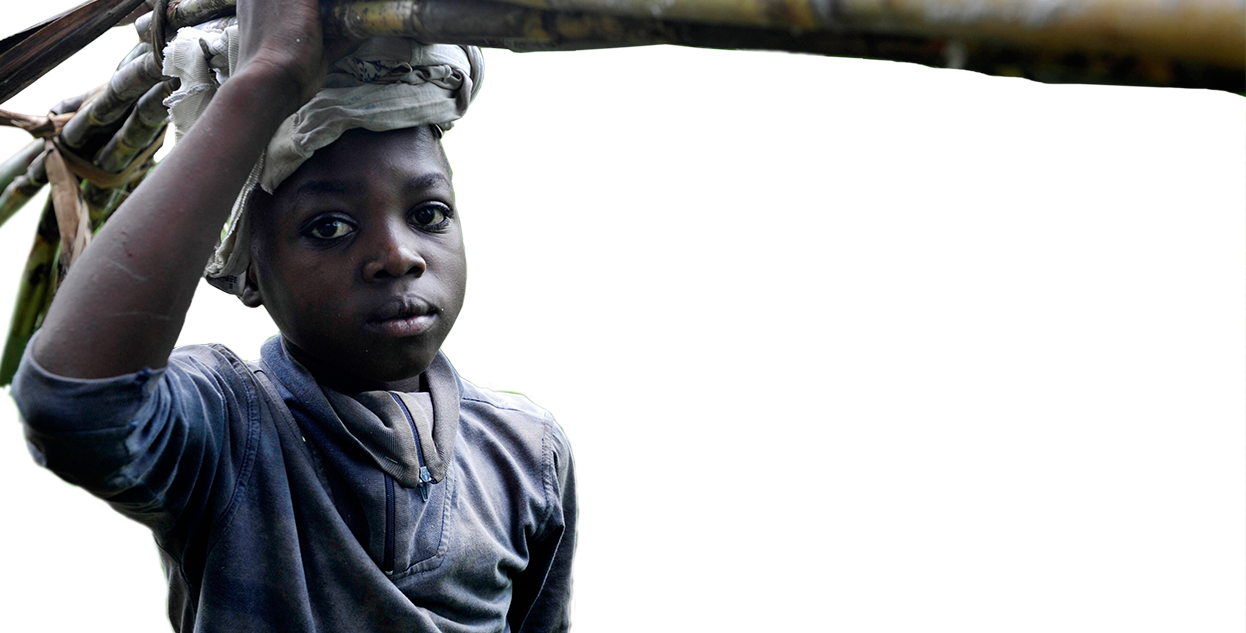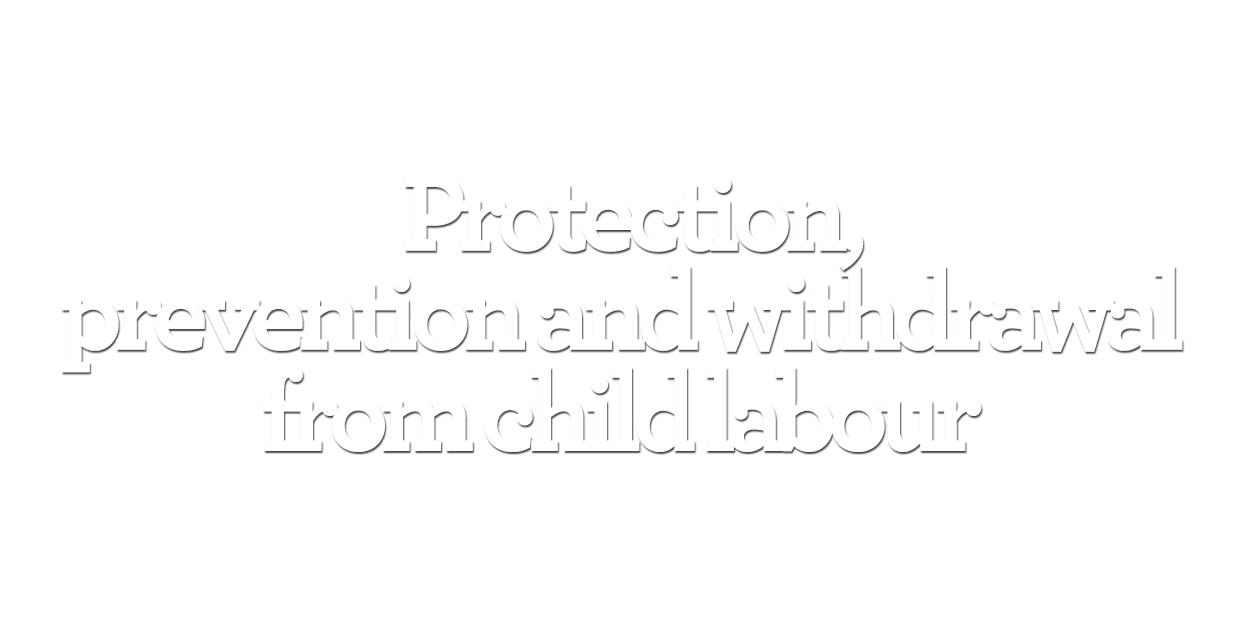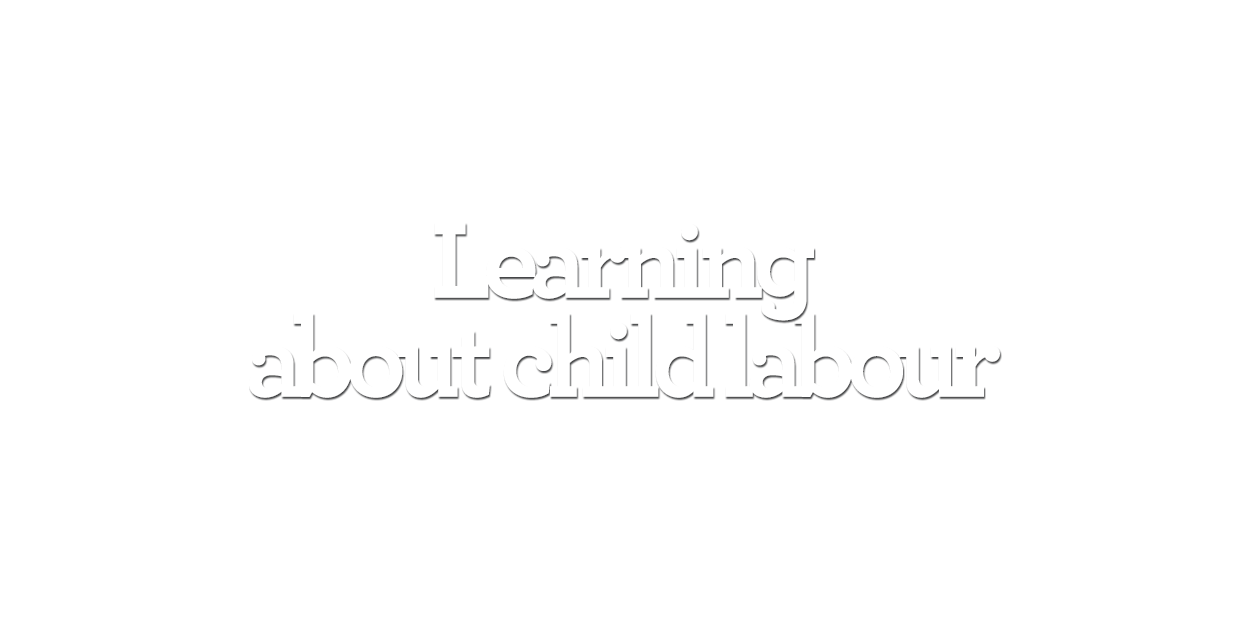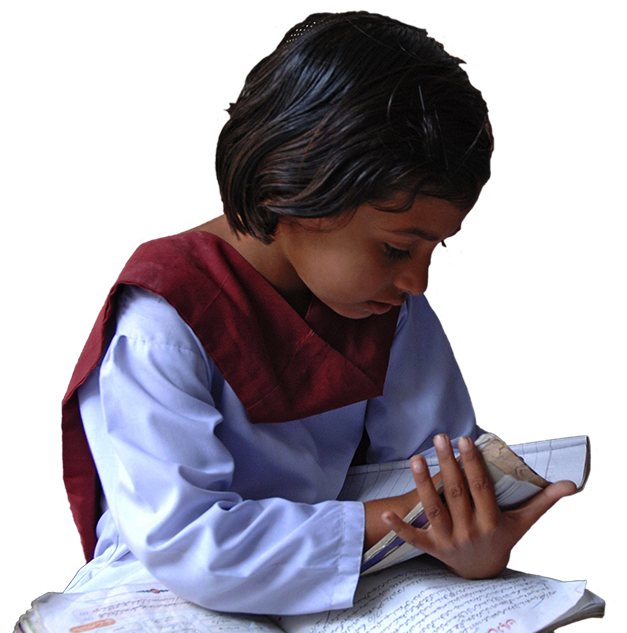Together we can create a world without child labour!
With special thanks to all the donors that have contributed to IPEC. United States (USDOL), Germany, Spain, United Kingdom, European Commission, Netherlands, France, Italy, Canada, Denmark, Norway, Finland, Switzerland, Brazil, Sweden, Norway NORAD, Ireland, United States (USDOS), Belgium, Japan, Australia, Spain Comunidad Autonoma de Madrid, United States (USAID), Austria, Syrian Arab Republic, Dominican Republic, Spain Ajuntamiento de Alcala de Henares, Italy Provincia di Milano, New Zealand, Poland, Portugal, Korea, Hungary, Luxembourg, UNTHSF, UNDP/MDTF, UNICEF, IADB, WFP, UNDCP, UNESCO, UNHCR, FAO, PCMEA, ISPI, JTUC-RENGO, SIMAP, ACILS, BGMEA, APFTU, ECLT, JTI, GIG, ICA, FIFA, SCCI, Mars Inc., Telefonica Foundation, Hey U Entertainment Group, Caixa Geral de Depositos, AEON Co. Ltd, Serono International S.A., and private donors.
You too can take action against child labour by joining our Red Card to Child Labour Campaign.
Find out how at: www.ilo.org/artworks.

The ILO's fight against child labour: Dreaming of freedom
Since 1992, the ILO International Programme on the Elimination of Child Labour (IPEC) has supported governments and workers' and employers' organizations of the ILO's member States in the fight against child labour. This exhibition shows what has been done and how we can all fight child labour in different ways.
Together we can create a world without child labour!
Photos: ©ILO
Design and development by Paprika, the communication agency based in Annecy (France).
What is child labour?
Child labour is work that children should not be doing because they are too young to work and should be in school or, if they are old enough to work, because it is dangerous or otherwise unsuitable for them.
Together we can create a world without child labour!
The ILO's early days
Fighting child labour has been a priority for the ILO since its creation in 1919. One of the first ILO Conventions (No. 5) adopted that year was on minimum age in industry.
"It is the exploitation of childhood which constitutes the evil... most unbearable to the human heart. Serious work in social legislation begins always with the protection of children."
Albert Thomas (France), the first ILO Director
Click to enlarge the media

Defining minimum age
During every decade since 1919, the ILO has adopted new international standards on child labour. In 1973, it adopted a consolidated Convention (No. 138) on minimum age for admission to employment or work.
Minimum age for entry into employment or work (not below the age of completing compulsory schooling): At least 15 years.
Possible temporary exception for developing countries: 14 years.
Hazardous work: 18 years (16 under strict conditions).
Click to enlarge the media

The first child labour project
The launch of IPEC
The launch of the International Programme on the Elimination of Child Labour (IPEC) in 1992 marks a new era for the ILO and its fight against child labour. IPEC's mandate: to build national capacities to address child labour and promote a worldwide movement to combat it. IPEC has since implemented over 4,000 projects and action programmes in Africa, the Arab States, Asia, Europe and the Americas.
Find out more about the ILO's International Programme on the Elimination of Child Labour at: www.ilo.org/ipec or get in touch with us at: ipec@ilo.org.
Click to enlarge the media
Partnering to fight child labour
The political commitment of governments to address the problem, together with workers' and employers' organizations, is essential. In 1993-94, six partner countries - Brazil, India, Indonesia, Kenya, Turkey and Thailand - sign up to work with the ILO to test ways to fight child labour.
Click to enlarge the media
Seeking an industry without child labour
Recognizing freedom from child labour
Child labour denies girls and boys their right to a quality education, to play and to be safe from harm. The 1998 ILO Declaration on Fundamental Principles and Rights at Work proclaims freedom from child labour as a fundamental human right, which all member States pledge to uphold.
Click to enlarge the media
Prioritizing the worst forms of child labour
The International Labour Conference in June 1999 unanimously adopts the Worst Forms of Child Labour Convention (No. 182). The Convention calls for the prohibition and the elimination of the worst forms of child labour as a matter of urgency.
"This is a victory for the children of the world, especially the tens of millions who are still forced to work in conditions that shock the conscience and haunt the soul."
President Clinton (United States), December 1999
Click to enlarge the media
Convention No.182, the most rapidly ratified ILO Convention
The Worst Forms of Child Labour Convention is the most rapidly ratified in the ILO's history. With 177 member States already signed up to it, in 2013 it is nearing universal ratification. Now we need to accelerate progress towards eliminating the worst forms as part of the struggle to end all child labour.
The time-bound programme approach to end child labour
IPEC supports governments to develop action plans against child labour and end its worst forms within a specific timeframe. This “Time-Bound Programme” (TBP) approach is first implemented by El Salvador, Nepal and Tanzania, beginning in 2001.
“I am here, Mme President, to plead for the empowerment of countries like mine as we seek to end child labour and set our children both free and on a firm foundation for the future they deserve.”
President Benjamin Mkapa (Tanzania) at the 2002 International Labour Conference
Click to enlarge the media
Tackling child labour in the globalized economy
The 2008 ILO Declaration on Social Justice for a Fair Globalization reaffirms the importance and indivisibility of fundamental rights at work, including the abolition of child labour. The Global Jobs Pact, adopted in 2009, calls for more efforts to achieve its elimination.
Click to enlarge the media
215 million children are in child labour
The ILO publishes global estimates permitting the analysis of child labour trends. Since the first estimates, there has been a 12.3% reduction in child labour. Though child labour worldwide has declined, a major challenge remains with 215 million children estimated to be in child labour, 115 million of them in hazardous work.
Click to enlarge the media
Giving the red card to child labour!
2012 marked the twentieth year of IPEC. Everyone has a role to play in the fight against child labour. Together we can mobilize, educate and empower people to exercise their rights. Let's stand united and work together to make the world a better place for children. Give the red card to child labour!
Want to learn more about child labour? Go to the ILO TV child labour playlist.
Click to enlarge the media
Addressing the root causes of child labour
Poverty, income insecurity, tradition and social exclusion, lack of public services, denial of rights at work and lack of political will are root causes of child labour. The 2010 Global Action Plan clarifies the need for integrated policies to tackle these root causes and to create child labour-free areas. Access to decent work for adults and youth, employment, social protection, rights and voice at work, is essential.
Click to enlarge the media
Employers' organizations fight child labour
Working with the ILO's Bureau for Employers' Activities (ACT/EMP), IPEC assists employers' organizations to strengthen their capacity to prevent child labour, to engage with governments and trade unions to develop national policies, and to support enterprises in protecting vulnerable girls and boys and in promoting safe work for young people.
Click to enlarge the media
Trade union organizations fight child labour
Working with the ILO's Bureau for Workers' Activities (ACTRAV), IPEC supports workers' organizations in their role as a driving force to end child labour, helping them engage with governments and employers' organizations to develop national policies and to build child labour concerns into their organizing and bargaining agendas.
Click to enlarge the media
Advocating the message through the arts
We aim to build a culture of respect for children's rights and the empowerment of girls, boys, young women and men to end child labour. The ILO SCREAM (Supporting Children's Rights through Education, the Arts and the Media) programme helps children express their views and feelings and become actors against child labour.
Click to enlarge the media
Supporting children withdrawn from child labour
Girls and boys need to be withdrawn safely from child labour and have appropriate alternatives: non-formal education as a bridge to going back to school, or vocational training for older girls and boys. Children whose mental or physical health has been damaged by child labour need specialized care.
Click to enlarge the media
Building knowledge on child labour
To tackle child labour we need to understand it. We support research that provides evidence of the most effective measures. Landmark research has been conducted for ILO flagship reports through the Understanding Children's Work inter-agency research programme (The ILO, the World Bank, UNICEF) and IPEC projects.
Click to enlarge the media











































































































































































































































